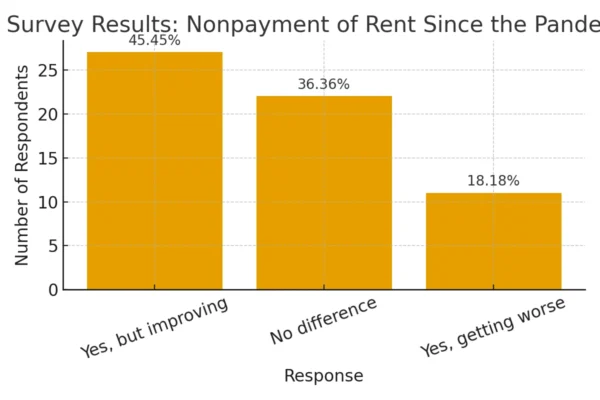Understanding Rental Property Depreciation
 If you own a rental property, it’s important to understand all of the potential financial benefits that come with this investment. The number one financial advantage that most property owners and managers consider is the semi-consistent flow of income that comes with renting property. However, another key advantage to learn about is rental property depreciation.
If you own a rental property, it’s important to understand all of the potential financial benefits that come with this investment. The number one financial advantage that most property owners and managers consider is the semi-consistent flow of income that comes with renting property. However, another key advantage to learn about is rental property depreciation.
Real estate depreciation can be a potential tax deduction and it’s a critical part of real estate investing.
Read on to get the full scope of real estate property depreciation, and what it means to you as a rental property owner.
What is rental property depreciation?
Rental property depreciation, also referred to as real estate depreciation, is an income tax deduction. When someone purchases a property, over time the physical asset will depreciate, or reduce, due to wear and tear.
This depreciation in value means the taxpayer can recover the cost of depreciation from the Internal Revenue Service (IRS) through a non-cash deduction in the investor’s taxable income.
However, the perceived decrease in the value of the taxpayer’s property isn’t always the reality. With rental properties, the owner can have cash flow coming in, but the depreciation can offset the revenue to lower their annual tax bill.
When does depreciation start affecting rental properties?
Annual depreciation begins affecting a real estate property the moment a taxpayer puts it into service (i.e., starts renting the property to tenants) — not the date the rental property is purchased. The property depreciation ends when it’s no longer being used, is disposed of or sold.
Additionally, a rental property can continue to claim a depreciation deduction even if it’s temporarily not in use. If a landlord chooses to renovate or repair a property before securing their next tenant, the property still continues to depreciate and remains eligible for the tax deduction.
Below is an example of when depreciation would begin for a rental property:
A real estate investor purchases a residential rental property on March 1. They then work to make the property usable, with it being ready to rent by June 1. The property owner then starts advertising it for rent, screens for tenants and signs a lease to start collecting rent on September 1.
Depreciation would not begin in September when the landlord begins collecting monthly rent. It would actually begin in June because that is the month that the building was ready for business.
When considering rental property depreciation, you should also include any building improvements and/or equipment that are used on the rental property. However, the land that the real estate property exists on is not depreciable.
What are rental property depreciation requirements?
Before a property owner starts assuming the tax benefits of real estate property depreciation, they must ensure they meet the IRS’ three main requirements. Luckily, for more real estate investors and rental property owners, it should be easy to meet the following criteria for eligibility:
- The taxpayer must own the rental property. If they have a mortgage on the property, the IRS still recognizes them as the owner. The taxpayer cannot be leasing the property — it must be in their name.
- The property must be used as a business or to generate income. This includes residential rental property. If the taxpayer uses the property for personal purposes, it’s not eligible for property depreciation. However, if a portion is used for business (i.e., home office), this can qualify for a tax deduction.
- The property must be used for business purposes for more than a year. If a real estate investor plans to purchase a rental property, improve it and then sell within the same year, it doesn’t qualify for the depreciation tax deduction.
How do you calculate rental property depreciation?
The first step to calculating rental property depreciation is to determine the cost basis, which is the physical asset’s calculated value. It may be the property owner’s instinct to assume the cost basis is equal to the property’s purchase price, but that’s not the case.
The cost basis takes into account any necessary asset additions and deductions that are made to the property’s value. For example, if a property owner spends an additional $25,000 renovating — or repairing — the rental property, that can be added to the cost basis.
Other cost basis additions may include:
- Lawyer fees
- Various closing costs
- Property survey fees
- Transfer fees
- Debt assumed from the seller
The property owner should then take into account the deductions that must be made to determine the cost basis. This deduction includes the land that is purchased. Cost basis only refers to the physical property (i.e., buildings) and doesn’t include the land value. The reasoning behind this is that land doesn’t usually lose value due to wear and tear in the way that physical buildings do.
Once the investor has calculated the cost basis, they must determine how the building will depreciate over the IRS’ prescribed useful life. According to the IRS, a residential rental property’s useful life is 27.5 years and a commercial property’s useful life is 39 years. For perspective, this means that for each year of use, a residential property’s depreciation expense is 3.636% and a commercial property’s expense is 2.564%.
The depreciation expense is applied to any residential rental property placed into service after 1986. This is due to the Modified Accelerated Cost Recovery System (MACRS), which determined the 27.5-year useful life average that the IRS uses.
Divide the cost basis by the property’s useful life amount to calculate your depreciation expense. Then, multiply this number by your marginal tax rate. This amount will be your property tax savings from rental property depreciation.
The overall equation should look like this:
(Cost basis / IRS useful life amount) X Property owner’s marginal tax rate = Real estate property depreciation
Step-by-step rental property depreciation example
If a real estate investor purchases a residential property for $300,000, that’s not going to be the cost basis. First, they must determine any value additions and deductions.
Let’s say an appraiser informs the owner that the property’s land is worth $100,000. The cost basis is now $200,000.
Then, the owner invests $50,000 in renovating and repairing the property. Now the cost basis is $250,000.
If the property is a residential rental property, the annual depreciation expense (3.636% of cost basis) would be $9,090. If it’s a commercial property, the annual depreciation expense (2.564% of cost basis) would be $6,410.
For this example, let’s assume the property owner is in the 22% tax bracket. Multiply the annual depreciation expense by the marginal tax rate (22%).
Below are the real estate property depreciation results:
|
Cost Basis |
Annual Depreciation Expense |
Rental Property Depreciation Amount (approx.) |
|
|
Residential Rental Property |
$200,000 |
$9,090 |
$2,000 |
|
Commercial Rental Property |
$200,000 |
$6,410 |
$1,410 |
What are the benefits of rental property depreciation?
Rental property taxes can cost an exorbitant amount per year for real estate investors — and that’s one of the main reasons rental property depreciation can be so helpful.
Real estate property depreciation can help lower the annual tax liability for a rental owner. This can potentially save a taxpayer hundreds to thousands per year, even if the rental property generates a steady flow of rental income.
A landlord can also take advantage of tax deductions based on any renovations, repairs or equipment used in that tax year to improve the property. This can help offset those annual expenses.
Meanwhile, having a comprehensive understanding of rental property depreciation and what it means for taxes is invaluable for any property owner. This is a critical tax deduction that can benefit investors over time and offset (or relieve some of the burdens of) other property-related expenses. It also means there will be fewer surprises during tax season due to the forward-thinking tax planning.
What is a property depreciation recapture tax?
Sometimes, a rental property asset doesn’t depreciate and that can result in a depreciation recapture tax. In this case, a rental property may grow in value due to area changes or upgrades.
A common example to understand this scenario may include if a property owner with a cost basis of $250,000 decides to sell the property after 10 years for $500,000. Due to this disparity, the IRS will be able to recoup the tax deductions that the rental property owner claimed in those 10 years.
However, rental property depreciation is voluntary, and a property owner may not have been taking the deduction. The IRS will still assume that the owner has been claiming it and expect a depreciation recapture tax, if necessary.
To make up for those missed depreciation deduction years, property owners can file amended tax returns for any mistakes or revisions up to three years in the past. For older deductions, taxpayers would need to complete the IRS Form 3115, also known as the Application for Change in Accounting Method.
If a real estate investor is looking to steer clear of paying these types of IRS tax costs on a rental property sale, they may consider researching other investment options, such as a 1031 exchange.
Important note: Real estate property taxes are highly regulated and require immense attention to detail. If you have any questions or concerns about depreciation, deductions, additions, etc. be sure to reach out to a tax professional before making any tax decisions for your property.
Get started with AAOA today
Interested in gaining more expertise, support and resources within the real estate world?
At AAOA, our members have 24/7 access to a large library of landlord documents and resources, including tenant screening, tenant background checks and rental documents — all to help you manage your real estate business more efficiently.
Excited to streamline the process? Join AAOA today!
Nothing contained on this website constitutes tax, legal, insurance or investment advice, nor does it constitute a solicitation or an offer to buy or sell any security or other financial instrument. AAOA recommends you consult with a financial advisor, tax specialist, attorney or other specialist who is able to properly advise you.













 Accessibility
Accessibility